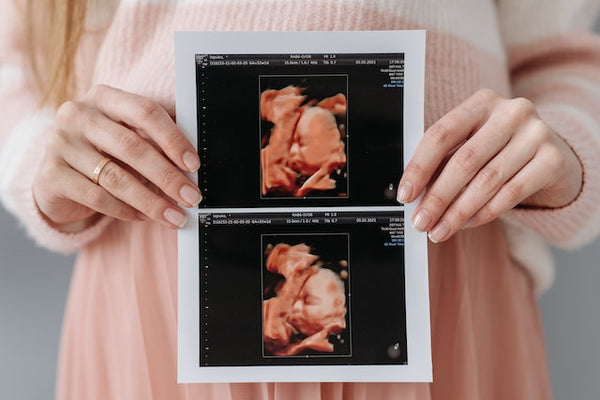How Do Umbilical Cord Accidents Happen? What to Know

The journey of pregnancy is a remarkable and joyous experience for many families, but it also comes with its share of challenges and concerns. One of the heartbreaking complications that can occur during pregnancy is stillbirth, where a baby passes away in the womb before birth. Among the various factors that can lead to stillbirth, umbilical cord accidents stand out as a significant contributor. Let’s take a closer look at what umbilical cord accidents are, along with recent research on the causes, risks, and potential preventive measures related to these accidents.
How Do Umbilical Cord Accidents Happen?
The umbilical cord, a lifeline connecting the developing fetus to the mother's placenta, plays a critical role in supplying oxygen and nutrients to the growing baby. Unfortunately, in some cases, this essential connection can become compromised, leading to umbilical cord accidents. Contrary to common belief, these accidents are not typically caused by accidental strangulation but by a sudden disruption in the blood supply to the baby.
The umbilical cord, containing one vein and two arteries, is responsible for giving the baby oxygen and nutrients from the placenta. An umbilical cord accident (also known as a UCA) can occur when the cord gets damaged, torn, or squeezed. This can seriously reduce the baby's oxygen supply. If not resolved quickly, it can lead to problems like suffocation, brain damage, or even death.
UCAs often happen due to unusual cord conditions, pregnancy issues, disruptions in blood supply, or a combination of factors. Here are some examples:
- If a baby is positioned feet-first, it can twist the cord unnaturally.
- A dangerous situation called vasa previa occurs when blood vessels in the cord cross the birth canal entrance below the baby. When labor starts, these vessels can get squished or break.
- An abnormally long cord can get tangled up.
- Too little amniotic fluid can make the cord press against the uterus wall.
- Too much amniotic fluid can push the cord out when the water breaks.
- Twins or more babies in the womb can crowd the space and increase the risk of cord squeezing.
How Common Are Umbilical Cord Accidents?
A 2012 study by the Stillbirth Collaborative Research Network and published in BMC Pregnancy and Childbirth looked into the likely causes of 512 cases of stillbirths where the mothers agreed to have a thorough examination done after the baby's death. They found that about 10% of these stillbirths were linked to problems with the umbilical cord. Among Caucasians, the rate of stillbirth due to umbilical cord issues was 13%, while in non-Hispanic black individuals, it was 4%. Around 9% of stillbirths were connected to high blood pressure, and 8% were related to other health problems in the mothers. A review of existing studies suggests that the rate of stillbirths caused by umbilical cord problems is around 15%. However, these figures don't account for stillbirths resulting from certain umbilical cord issues like twisting, multiple cords wrapping around, and abnormal placement in the placenta. The reason for this omission is that some experts believe these abnormalities might not directly lead to stillbirth or recurring instances of it.

How to Prevent Umbilical Cord Accidents
While you may be worried about how to avoid an umbilical cord accident while pregnant, it’s actually quite a rare issue. This is because the cord has a slippery substance called Wharton's jelly that protects the arteries and vein inside. So, when something pushes on the cord, the vessels can easily move out of the way, similar to a wet bar of soap slipping out of a tight grip.
Even though some accidents are random and can't be prevented, there are signs that might suggest an accident could happen:
- Babies that move a lot, jerk, or have hiccups more than four times a day might have a higher risk of the cord getting compressed.
- If the umbilical cord doesn't look twisted like a rope, it could mean a higher chance of problems.
- Women who got pregnant through in vitro fertilization (IVF), are expecting more than one baby, or have placenta previa (where the placenta covers the cervix) are at higher risk of vasa previa, which may lead to a UCA.
Some of these issues can be spotted during regular pregnancy check-ups while others, like excessive baby movement, might need an ultrasound. If a problem is found, the doctor might suggest staying in the hospital for at least a day to keep an eye on the baby using ultrasound and a fetal heart rate monitor.

The Takeaway on Umbilical Cord Accidents
The discovery that umbilical cord accidents contribute to a notable percentage of stillbirth cases underscores the importance of understanding and addressing this issue. Through ongoing research and improved awareness, healthcare providers and expecting parents can collaborate to identify risks, take preventive measures where possible, and enhance the chances of a safe and successful pregnancy. While the journey of pregnancy may have its challenges, it is through knowledge and proactive care that we can strive to reduce the occurrence of umbilical cord accidents and provide the best possible outcomes for both mothers and babies.
Disclaimer: The information on our site is NOT medical advice for any specific person or condition. It is only meant as general information. Please contact your health provider if you have any medical questions or concerns about your child or yourself.










